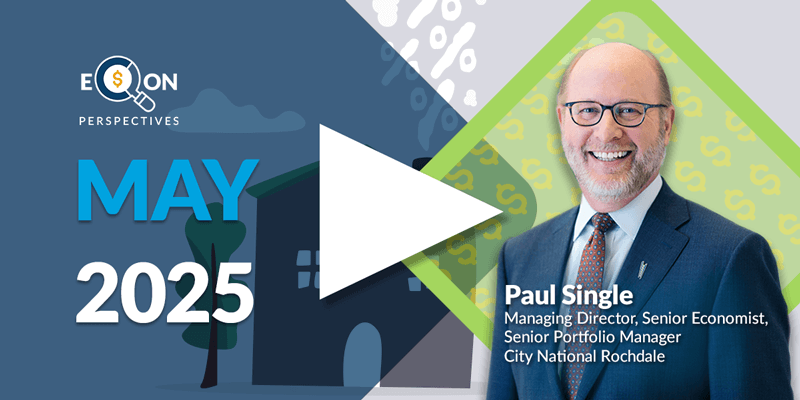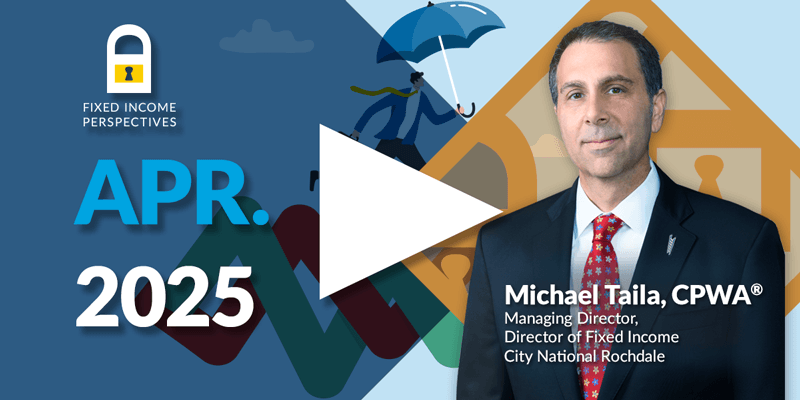
CNR Speedometers®
July 2024
Forward-Looking Six to Nine Months
TRANSCRIPT
Checking in at the midpoint of the year, our outlook for the economy and financial markets remains broadly positive.
While we have made no changes to our forward-looking Speedometers® this month, recent measures of economic activity have come in consistent with the dial changes that we did make earlier in the year, and with our forecast.
The first half of 2024 has really been a tale of two trends in the economy. After a number of upside surprises from January through March, a stark reversal has occurred with the economic data.
Now, the downward trend surprises are not a significant worry for us, but they do signal moderation ahead across a variety of economic measures.
Over the second half of 2024, we expect many of the trends underway to continue. A slower pace of economic growth, driven by cooling labor demand and a more budget-conscious consumer, and also a continued easing of inflation pressures should finally pave the way for the Fed to begin its long-awaited easing cycle. And as we look forward, there are a few Speedometers® in place in particular that we will continue to monitor.

■ Previous Month ■ Current Month
Inflation
What we see
While a slow, persistent rise in prices is consistent with a healthy, growing economy, a rapid increase in inflation, especially if unanticipated, can be harmful. Inflation means higher consumer prices, which often slows sales and reduces profits.
Dial 1: Inflation 1:16— The first is inflation. After a series of hotter-than-expected results in Q1, we think the resumption of a downward trend across inflation measures reinforces our decision in March to move the inflation dial into the green zone.
Core inflation, excluding housing, has now fallen to its lowest level in three years, while evidence is building that households are becoming more discriminating in their spending.
Goods inflation has already come down significantly, and the latest data confirms slowing service prices, which have been sticky.
Housing components do remain the biggest driver of overall inflation, but even if housing prices do take longer to cool, a continued moderation in other service areas should put downward pressure on the overall level of inflation. As a result, we may look to further upgrade this dial in the near future.

■ Previous Month ■ Current Month
Housing / Mortgages
What we see
Housing is an important indicator of the overall economy and a key driver of investment and job growth. We look at such things as starts, permits, foreclosures, delinquencies, and bank lending to assess the sector's health.
Dial 2: Housing/Mortgages 2:05— Now turning to housing, residential investment has been a big contributor to GDP growth over the last several quarters, but housing activity is showing signs of a crest.
Ongoing supply shortages are helping to keep home prices at record levels, but elevated mortgage rates are putting pressure on buyers and keeping sellers on the sidelines. Existing home sales fell for the third straight month in May, and new housing starts fell to the slowest pace since June of 2020.
Units under construction have also declined to a run rate of essentially 0% from a peak of over 40%, and the number of completed homes is also slowing.
Given the supply-and-demand picture, weakness in the market may not show up initially in prices, but it will impact activity, and that has the potential to slow GDP. So we are considering downgrading the outlook for housing in anticipation of the continuation of these trends.

■ Previous Month ■ Current Month
Labor Market
What we see
Research has shown that employment and income expectations, along with credit availability, are the most important determinants of consumer spending. Personal consumption amounts to roughly 70% of GDP, making a strong labor market essential to a healthy economy.
Dial 3: Labor Market 2:58— And the third Speedometer® we're keeping in focus is the labor market. We're seeing continued signs of loosening in labor market conditions. Monthly job gains so far this year have remained strong, averaging around 250,000 over the past three months. But by most other metrics, the labor market is normalized.
So, if we take a look at the job openings-per-available worker ratio, it was 1.25 in May, down from well over 2, and the unemployment rate now sits at a 28-month high. Both the hire and quit rates have returned to pre-pandemic levels.
And this progress does not escape the attention of Fed officials, who continue to point toward a normalization of labor conditions and reduced pressure on wages. So, our labor market dial remains green for now, but the job market is quickly approaching a balanced level, and it may warrant a slight downgrade soon.

■ Previous Month ■ Current Month
Monetary Policy
What we see
Monetary policy is one of two ways the government can influence the economy and financial markets. By manipulating interest rates, the Federal Reserve can raise or lower the cost of money to stabilize or stimulate the economy.
Dial 4: Monetary Policy 3:49— The last dial is monetary policy. All of this taken together — the return to disinflationary trends, a slowing in overall economic activity, and normalizing labor conditions — supports the Fed’s beginning to cut rates later this year. So, we have revised our 2024 expectations for Fed rate cuts, believing officials are now set to cut rates at least once this year and perhaps as soon as September, with a second cut increasingly possible if progress on inflation continues.
Now, markets may endure some volatility based on the timing of the first cut, but the bigger backdrop of a Fed rate-cutting cycle, along with the approaching end to balance-sheet runoff, is broadly favorable for economic and investment conditions, and we think monetary policy should shift into the green zone very soon.
Selectively, these potential changes to our Speedometers® (and perhaps others) are consistent with our positive outlook for financial markets for the rest of 2024. With equity markets at record highs and uncertainty about the U.S. elections in focus, especially in the wake of the presidential debate, there is a good chance that the pace of gains may slow and become more volatile in the months ahead. However, with Fed rate cuts on the horizon, low recession risk, and solid earnings expectations, we think markets can continue to advance.



